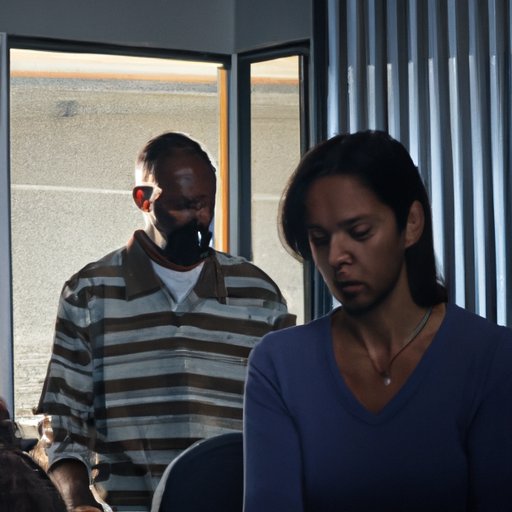
Introduction
Dissociative Identity Disorder (DID) is a complex and stigmatized mental disorder. It is commonly known as multiple personality disorder and often misunderstood by society. DID is a dissociative disorder that causes an individual to create alternate personalities or identities. These identities may have different behaviors, thoughts, and emotions. The goal of this article is to help those who have encountered DID understand and cope with the disorder.
Breaking down the stigma: A guide to understanding and coping with DID
DID is stigmatized and often misunderstood due to media representation and misinformation. It is a complex disorder that develops as a coping mechanism for individuals with a history of trauma, abuse, or neglect. The development of alternate identities is a way for individuals to distance themselves from traumatic experiences and protect their mental health.
Individuals with DID experience a range of symptoms, such as memory gaps, identity confusion, and emotional dysregulation. DID is diagnosed through thorough psychological and psychiatric evaluations, which may include interviews, observation, and psychological tests.
Fortunately, there are many ways to cope with DID. Therapy is a popular and effective treatment option for DID, particularly therapies that address trauma, such as cognitive-behavioral therapy (CBT), dialectical behavior therapy (DBT), and eye movement desensitization and reprocessing (EMDR). Moreover, medication and self-care practices, such as mindfulness, exercise, and journaling, can also be useful in managing DID symptoms.

Finding unity in multiplicity: Personal experiences with DID
There is no single experience or identity within the DID community. Individuals with DID may have different alters, behaviors, and experiences. Sharing personal stories and experiences can help individuals with DID find unity, support, and validation. The DID community can also help reduce stigma and improve public understanding of DID.
The science behind dissociative identity disorder and its treatment options
Recent research has shown that DID may be linked to the brain’s capacity to create and store memories. Individuals with DID show distinct neural activity patterns when they switch between identities. Moreover, neuroimaging has demonstrated that the brain structure of individuals with DID is different from those without DID. These findings contribute to the growing understanding of DID and its treatment options.
Treatment for DID varies depending on the individual’s specific needs and preferences. Psychotherapy is an effective and evidence-based treatment for DID, and it focuses on addressing the underlying trauma and strengthening the individual’s sense of self. Medication may also help manage comorbid conditions, such as depression, anxiety, and PTSD. Alternative therapies, such as art therapy, yoga, and meditation, may also be beneficial in managing symptoms of DID.
From Sybil to Split: What pop culture gets wrong about DID
Popular media, such as movies and television shows, often portray DID inaccurately and perpetuate harmful stereotypes. DID is often sensationalized as a disorder that causes individuals to become violent or dangerous, which is not true in most cases. These harmful stereotypes contribute to the stigmatization and discrimination of individuals with DID. Advocating for accurate and compassionate representation of mental health in the media is essential in fighting against damaging stereotypes.
A therapist’s perspective on treating DID effectively
Therapists who specialize in treating DID have unique insights and perspectives on this complex disorder. Effective treatment involves building a strong therapeutic relationship with the individual with DID, focusing on creating a safe and supportive environment, and addressing the underlying trauma that caused the development of the disorder. A therapist with a trauma-informed approach can help individuals with DID feel validated and seen in their experiences.
The impact of trauma on DID development and recovery
There is a clear link between trauma and the development of DID. Trauma-focused therapies, such as CBT and EMDR, help individuals with DID recover from their trauma and manage their symptoms. These therapies focus on helping individuals process and work through their trauma, create a sense of safety, and build healthy coping mechanisms. It is essential to recognize the central importance of trauma in the development and recovery of DID and provide appropriate resources and support to those affected by it.
Finding support and community for those living with DID: Resources and recommendations
There are many resources and recommendations available to individuals with DID, such as support groups, online communities, and helplines. Support groups, such as those offered by the National Alliance on Mental Illness (NAMI), provide a space for individuals with DID to connect, share experiences, and support each other. Helplines, such as the National Suicide Prevention Lifeline and the Crisis Text Line, offer immediate support and resources in times of crisis.
Conclusion
DID is a complex and stigmatized mental disorder that requires compassion, understanding, and support. It is essential to break down harmful stereotypes and provide accurate information and resources to those affected by this disorder. Therapy, medication, and self-care practices can be useful in managing DID symptoms, and a strong sense of community and support can help individuals with DID find unity and validation.





